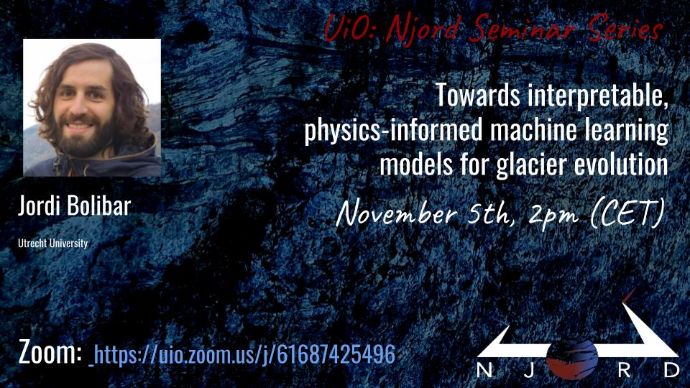Abstract:
The amount of available data for constraining glacier models has seen a surge in the last decade. Traditional regional or global glacier models are generally not suited to assimilating these new huge spatiotemporal datasets, and they are becoming increasingly harder to optimize. Alternatively, machine learning offers new opportunities for data assimilation and prediction, but it is often applied as a black box, ignoring all previous long standing knowledge on the physics of glaciers.
I will first present an application of a traditional deep learning approach to simulate and reconstruct glacier mass balance at a regional scale. I demonstrate how such an approach allows capturing the nonlinear sensitivity of glacier mass balance to changes in climate forcing. By comparing it to both a linear machine learning approach and a traditional temperature-index model, I am able to quantify the biases introduced by linear models to future projections of glacier mass changes and therefore sea-level rise. However, such a black-box approach presents a limited interpretability to understand the underlying physical processes involved. In order to overcome this main limitation, I will then introduce a new fully differentiable hybrid modelling framework, mixing differential equations with neural networks, also known as Universal Differential Equations. All available knowledge on a given glacier process can be encoded as a differential equation, and sub-parts of the equation (e.g. a parameter) can be learnt by a regressor (e.g. a neural network or a set of basis functions). This provides flexibility in model design, opening new modelling possibilities in two main directions: (1) Since the model is coded in the Julia programming language, which is fully differentiable, we can go beyond traditional inverse optimization. Parts of the equation of a given process can be optimized based on a nonlinear function instead of a single scalar value. (2) The function learnt by the regressor can be then mapped to a dictionary of known functions, thus retrieving the mathematical representation of the glacier process and adding it to the original equation.
Finally, I will briefly showcase a toy version of a new open source glacier modelling framework that implements the approach above. Focusing on a single glacier, we use a 2D Shallow Ice Approximation and a temperature-index mass balance model, for which we learn and predict specific parameters of ice rheology. This simple example illustrates the first steps of a new global glacier modelling framework to be embedded on top of the Open Global Glacier Model (OGGM).
You will find the complete schedule for Njord Seminar Series fall '21 here.
To get news, invitations to seminars and more from Njord, please go here to subscribe to our newsletter.
